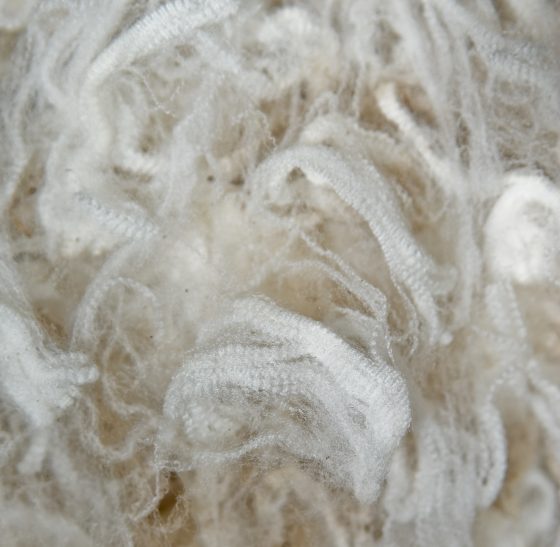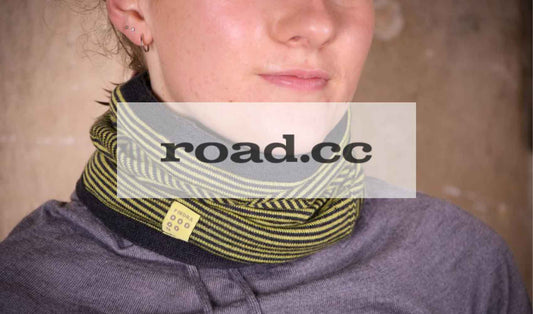Plastic is the headliner at the moment, the one that is maybe easiest to get our heads around, we see it lying at the side of the road as we move around and it’s something that we feel we can make a personal difference too. Buying that reusable cup seems like something tangible we can do that will help the efforts, but we mustn’t forget that there are other industries affecting the world that we live in that maybe don’t have the same media clout at the moment but they will!
A la mode
Fashion has become a past-time for many with ‘shopping’ actually being termed a hobby, it’s quite easy to imagine how ‘fast fashion’ is a polluter, a lot of clothing and fashion aren’t designed to last with new designs and styles arriving in stores daily. Some of those pieces will be bought and worn an average of 7 times and others will be confined to the sale rail then, eventually disposed of unsold. Fashion at the fast end is a fickle business where ultimately the clothes become waste quickly.
The carbon footprint of clothing is immense and the business complicated. To bring a garment to sale seeds need to be sown, tended, watered, and harvested then the fibres refined, spun and dyed before being woven, trimmed, stitched and shipped to their country of sale. We want clothing that costs a few £’s so prices are driven down and there isn’t much of a slice for the hundreds of people along the supply chain.

To give you an idea of the scale of the waste from the fashion industry, here are a few facts from the report: A New Textiles Economy: Redesigning fashion’s future by the Ellen MacArthur Foundation.
- The worldwide fashion industry creates greenhouse emissions of 1.2bn tonnes a year – larger than that of international flights and shipping combined;
- less than 1% of the material used to make clothing is recycled into new clothing;
- the estimated cost to the UK economy of landfilling clothing and household textiles each year is about £82m;
- a truckload of clothing is wasted every second across the world;
- the average number of times a garment is worn before it ceases to be used has decreased by 36% in 15 years;
- half a million tonnes of plastic micro-fibres are released per year from washed clothes – 16 times more than plastic microbeads from cosmetics – contributing to ocean pollution.

Cottoning On
Over 60% of all clothes contain cotton and that’s great, it’s a natural fibre and is great for us to wear in loads of ways but it is a really thirsty plant. It can take up to 2,700 litres of water to manufacture just 1 cotton T-shirt which is pretty phenomenal, that would cover your NHS recommended water consumption of 1.2 litres a day for 2,250 days. Synthetic fibres aren’t as water intense but involve more chemicals in their production which inevitably find their way into the soil and environment.

Printing, dying and washing also involves chemicals with Greenpeace calling for clothing companies to shop using alkylphenol ethoxylates (APEOs), phthalates and PFCs. Many companies have set "acceptable limits" on APEOs, but because these harmful chemicals accumulate in nature, limits don't fix the problem
Cotton production uses 16% of the world's pesticides to aid its growth so all in all its not the environmentally friendly fabric that we tend to think it is.
What is the fashion industry doing about it?
Some big brands are waking up to the impact of the fashion they make on the world and are doing something about it. The Ellen MacArthur Foundation is doing some incredible work on encouraging consumers and businesses to think more about a future ‘circular economy’, an economy where resources are kept in use for as long as possible rather than used a few times then put into landfill.

Companies like Stella McCartney have been inspired by this and are starting to take the impacts seriously - “(The Ellen MacArthur Foundation) report … opens up the conversation that will allow us to find a way to work together to better our industry for the future of fashion and for the future of the planet,”.
McCartney has been a member of the Cradle to Cradle Products Innovation Institute’s Fashion Positive initiative since it launched in 2014. The Cradle to Cradle Certified™ mark provides evidence of a manufacturer’s ongoing commitment to sustainability and to their communities, manufacturers need to show that they are making advances to keep the accreditation on their labels. It may become as prevalent and recognisable as the red tractor on UK produce or the MSC logo on fish.

It’s not just the high fashion brands that are taking their sustainability seriously, C&A has launched a ‘“Cradle-to-cradle certified” T-shirt at a mass-market price. As well as their research into sustainability, H&M released a new brand of clothing that incorporated the principles of sustainability but also designed the clothing with longevity in mind. H&M is known for their fast fashion so designing clothing that focuses on enduring design and quality is a big shift for them.
Fashion giant Zara is installing collection bins across all its stores to try to tackle the immense waste that it causes, it claims to extend the lifespan of the clothing that is put recycled through them. Brands like Patagonia have built their whole ethos on their sustainability, like Zara they will take back worn clothing to recycle, they’ll also repair damaged items and encourage customers to hold on to their clothing for decades - quality lasts is the message.
We asked Dr. Alana James, Assistant Professor of Fashion at Heriot-Watt University how the fashion industry is adapting to the increased call for sustainability.
"I think that the knowledge surrounding sustainability in the fashion industry has evolved quite rapidly in the past few years, with some key emerging themes/areas of interest being at the forefront of the action being taken. These would be transparency, accountability and circularity, all of which begin to address sustainability from both an environmental and social perspective".
"Transparency and accountability naturally come hand-in-hand but the demand for providing supply chain information has been increasing steadily with stores such as M&S and Patagonia now providing supplier maps on their website. A lot of brands are also using the power of narrative to engage consumers with this information, so for example, using worker stories to captivate the audience (lots of brands do this including monsoon and M&S)".
"Circularity is a conversation which is particularly popular in academic and NGO publications at the moment, with this idea of waste becoming valuable and being reused at the beginning of the product lifecycle. Here consumers become investors as they have the power to ensure the success of a circular business within the fashion industry".
What about Wool?
Wool is one of nature’s most wonderous fibres and one of the most sustainable. It’s natural, renewable and biodegradable, it is also the most reused and recyclable fibre on the planet with many slow fashion designers choosing to work with wool.

“The Woolmark Company sponsored a global wardrobe survey in 2015 by AC Nielsen, which confirmed that wool garments have a longer life than the dominant apparel fibre - cotton - typically 50% longer, and are washed significantly less frequently,” explains Fibre Advocacy & Eco Credentials Program Manager Angus Ireland. “At the end of its life wool is more commonly donated to others for a second life. Wool may represent only 1.3% of the global fibre supply but wool garments are donated to charity at a much higher rate of about 5%.”
Wool also boasts being biodegradable, the ultimate in sustainability, it can return its nutrients to the environment so they can be reused by nature. Synthetic fibres take 30-40 years to breakdown whereas as wool can biodegrade in as little as 6 months under the right conditions. Don’t worry though, your wool won’t start to break down at home unless you keep it warm and wet for several months.
Where FINDRA stand
FINDRA are proud of what they produce and proud of their environmental credentials in terms of sustainability.
FINDRA are advocates of slow fashion, producing high-quality clothing that lasts, it is designed to be worn for years and become a wardrobe staple. The classic colours are designed to look good for years, not to be replaced every season. FINDRA also offer a repair service so any holes or damage will be repaired meaning you can keep wearing the garment for even longer.

Being made of 100% merino wool, the classic FINDRA range doesn’t need to be washed as often which releases chemicals and microfibres into the environment (although none of those microfibres would contain plastic) and the wool will eventually biodegrade so as not to add so much bulk to the masses of clothing that is put into landfill each year.
FINDRA know, like every company, that they could do better, they aren’t perfect but by continually striving to find the best solutions, make their clothes last longer and looking to make changes where they can, FINDRA hope to be the best they can be in terms of sustainability and be part of the global fashion revolution to make a change.




